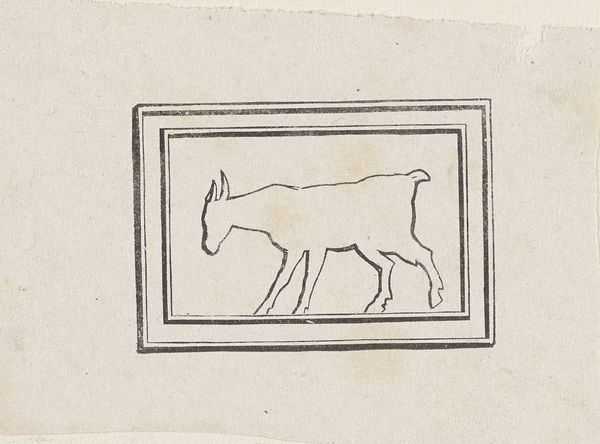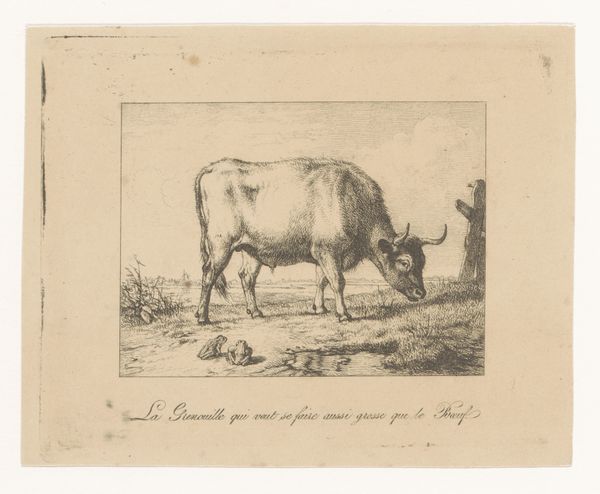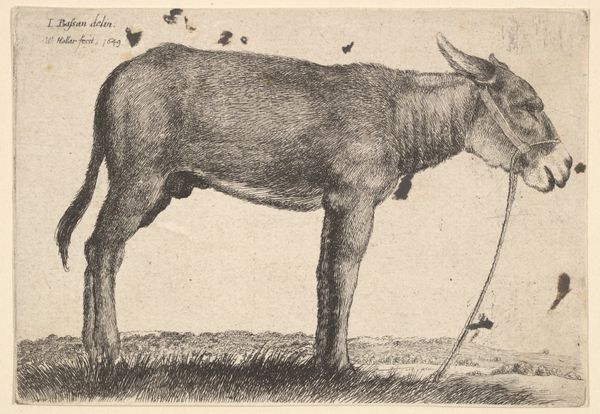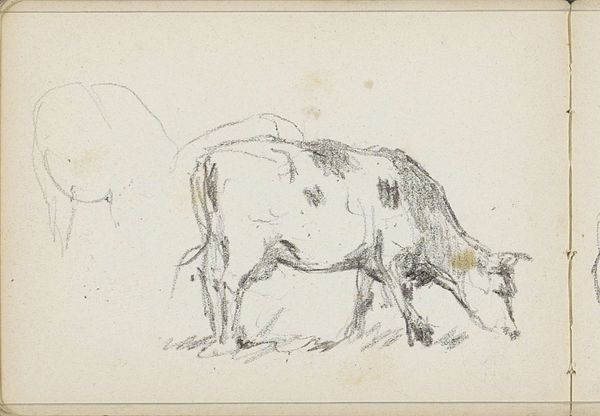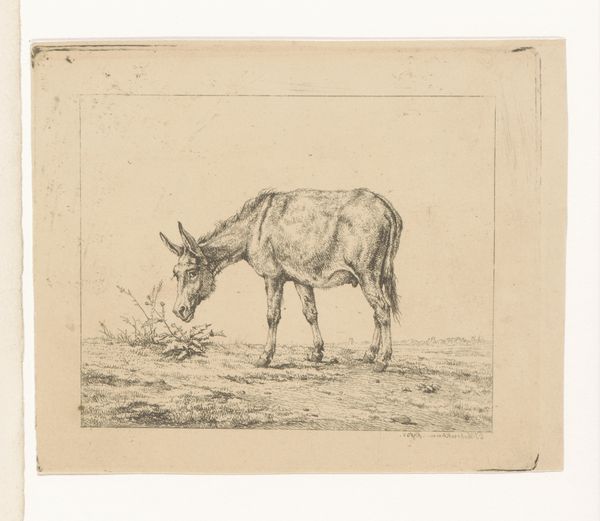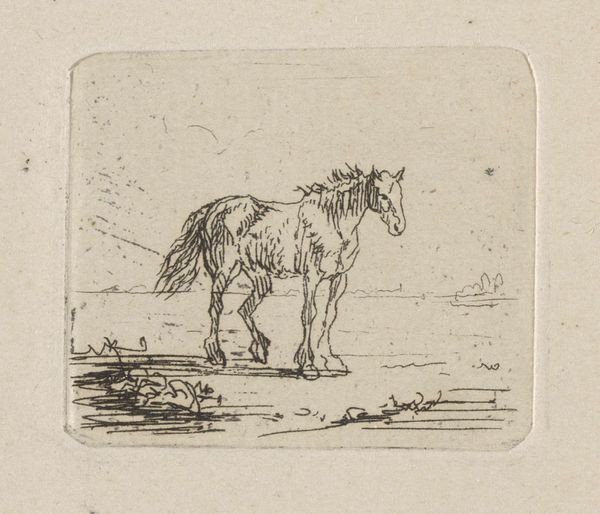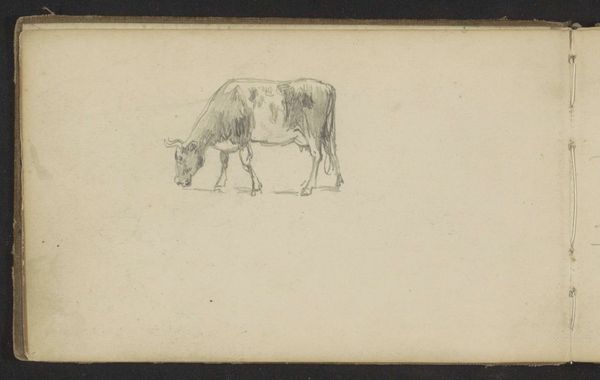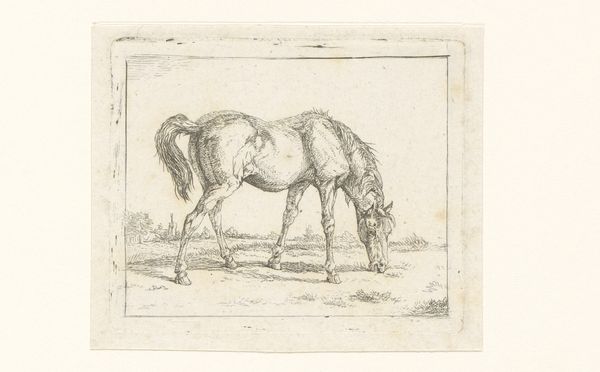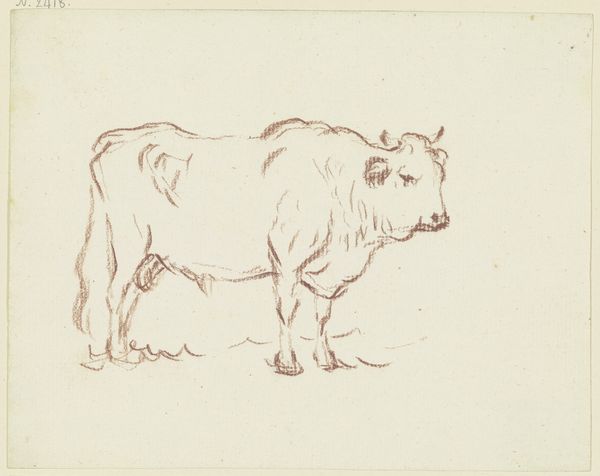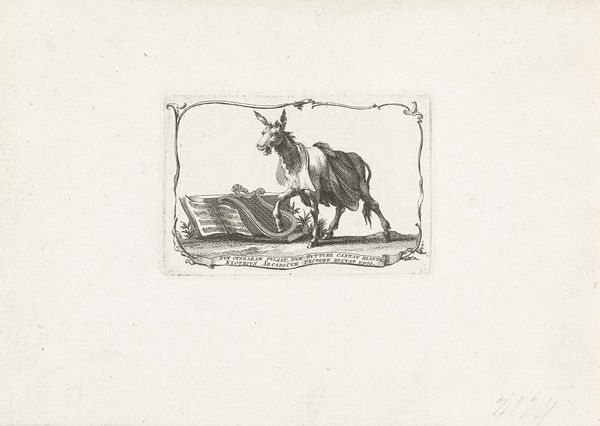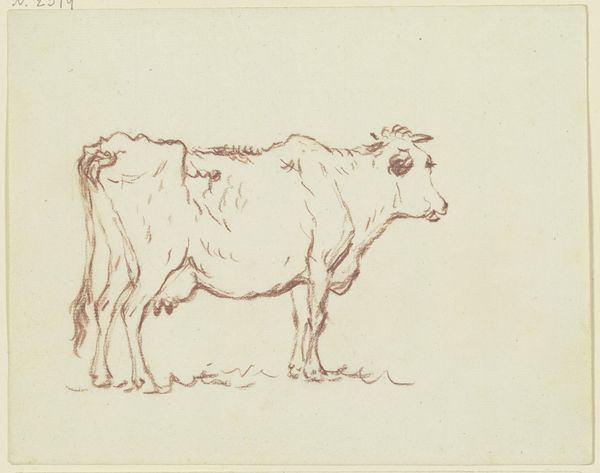
drawing, ink, pen
#
portrait
#
drawing
#
animal
#
pen illustration
#
pen sketch
#
figuration
#
ink
#
pen work
#
pen
Dimensions: height 50 mm, width 63 mm
Copyright: Rijks Museum: Open Domain
Curator: Well, hello there. You see before you a pen drawing titled "Koe," created by Vincent van der Vinne van Lee. The piece dates from the period of 1808 to 1876. Editor: My initial reaction is to note the simplicity of the lines—almost like a child's rendering. The limited detail concentrates your eye on the basic shape. It's quite immediate. Curator: The fact that Van Lee chose to employ simple materials—pen and ink—is compelling. The repetitive hatching could signify the time and the labour the artist invested into such simple depiction of an animal. It’s very much rooted in the means of production, don't you think? Editor: Precisely! The medium makes it relatable. These lines feel inherently democratic – accessible both in its creation and its visual impact. The portrayal of the cow, a work animal, can be viewed through a wider social lens, connecting artmaking with everyday labor, farm work, agriculture… all deeply interwoven. Curator: That's very insightful! This artwork acts almost like a social document of the time, demonstrating how livestock and labor were inextricably linked to the culture. This artwork reflects back on socio-economic foundations of the artist's era. Editor: And don’t you think the framed nature is telling? Placing humble farm life in the context of the refined 'art world' challenges our preconceived notions about art's boundaries. Curator: Indeed! Its visual directness and lack of ornamentation underscore how the materials become a narrative tool to tell the social stories from two centuries ago. Thank you for shedding the light on that. Editor: And thank you. It's important to consider how museums help perpetuate narratives through pieces like this. How these unpretentious materials of art can shape the public understanding of agricultural society from that era. Curator: This small drawing, "Koe," reveals layers of material, process and historical interpretation. Editor: Exactly. It highlights art as a reflection of its cultural, political, and economic conditions, challenging high and low art conventions.
Comments
No comments
Be the first to comment and join the conversation on the ultimate creative platform.
